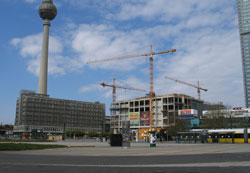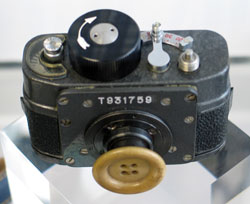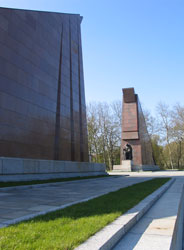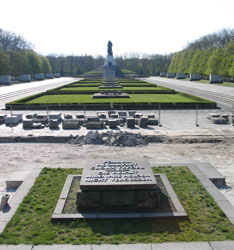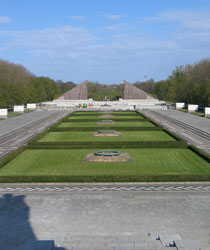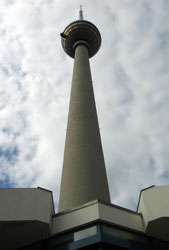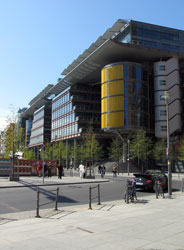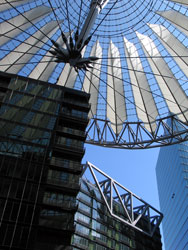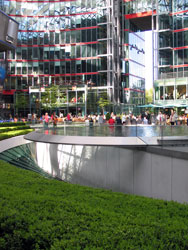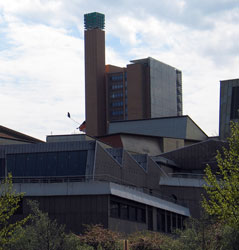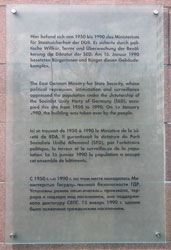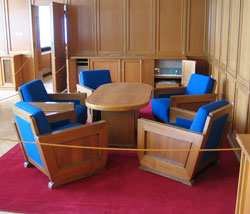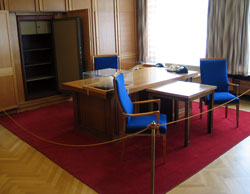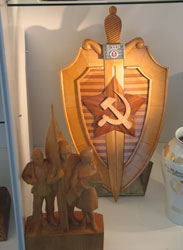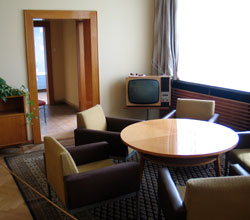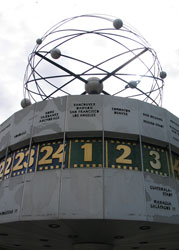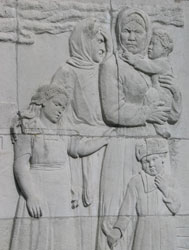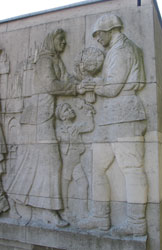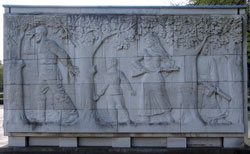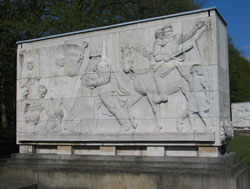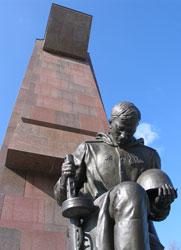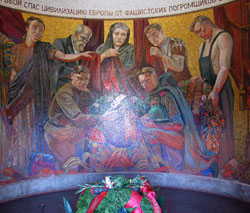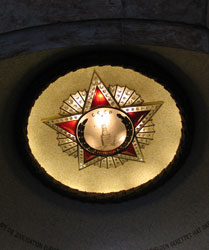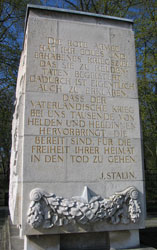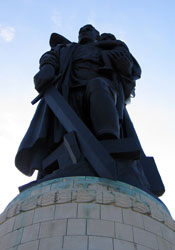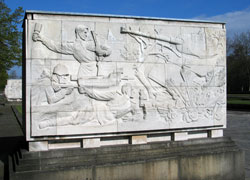Kevin Takes a Daytrip to Berlin
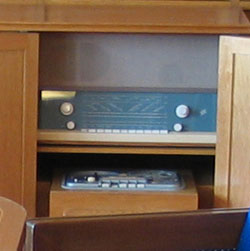
In April 2005, I took a weeklong business trip to Hamburg. On the following Saturday, I made a solo daytrip to Berlin. Since this was my seventh visit to Berlin, I'd already seen most of the "usual" tourist spots — museums, the Brandenburger Tor, the Bundestag — so I spent my time visiting some of the places I'd never quite gotten around to.
(Treptower Ehrenmal | Alexanderplatz | Potsdamer Platz | Stasi Museum)
Sowjetisches Ehrenmal Treptower Park
From 1946 to 1949, the Soviets built a gigantic memorial to the Soviet dead of World War II in Treptower Park, in southeast Berlin. I'd been here before (but hadn't taken pictures) — on my first visit, I found it almost over-the-top kitschy, but my attitude was subsequently tempered by finding out that this is not only a memorial, but a gravesite — about 5,000 Soviet soldiers are buried here.Alexanderplatz
After the Ehrenmal, I went in for more of the glories of Socialism by visiting Alexanderplatz. Once a showpiece of Socialist architecture, these days it's looking more than a little down at the heels. After reunification, grand plans were made for a vast rebuilding, but those plans dissipated in the face of financial realities, and now the plaza is being renovated piecemeal.
The Weltzeituhr is pretty self-evident; walk around it to see what time it is all around the world. (In the rightmost picture, I reconcile myself to the fact that my middle-of-the-day is about to become my one-in-the-morning once I come back to California.)
The 368-meter-high TV tower was built in the late 1960s with the help of Swedish engineers. At its top is an observation platform and a rotating cafe. I got in line to go to the top; however, after a while of waiting in a long line and not going anywhere, an announcement was made that due to "technical reasons", only thirty people could be taken to the top of the tower at a time, every ten minutes. I counted ahead to find well over an hour's worth of people in line ahead of me; I decided to bail out and spend the rest of my day elsewhere.
Potsdamer Platz
I took a break from the East with a visit to Potsdamer Platz, the white-hot center of modern Berliner capitalism. A no-mans-land during the Cold War (it was bisected by the Berlin Wall), it's now home to all manner of aggressively modern architecture.
Stasi Museum
My last planned stop of the day was at the Stasi Museum. During the life of the East German regime, the Ministry for State Security — Ministerium für Staatssicherheit, or "Stasi" — kept an extensive and oppressive watch over the citizens of East Germany. Through its approximately 102,000 employees and network of 174,000 informers, the Stasi monitored the population for ideologically correct behavior, keeping files on millions. (The surveillance could be as routine as phone taps, or could be led by a sick and bizarre creativity to such extreme lengths as paying agents to seduce and marry targets for observation!) During the fall of the East German government in 1989, the Stasi's offices were 'raided' by the citizenry — but not before employees could shred vast numbers of files (which are still being reassembled, albeit now very slowly, by a government agency today). The headquarters building of the Stasi's enormous office block in Berlin is preserved as a museum and interpretive center.
Below the history floor was what most people come for — a walk through the preserved offices of Stasi higher-ups. Stop for a while and drink a coffee or Coke in the same cafeteria where once only Stasi generals sat!
Maybe they listened to the rockin' hi-fi concealed in that cabinet along the wall. Even given East Germany's reputation for technological backwardness, a lot of the equipment on display looked incredibly ancient and clunky, particularly for a group that was at the pinnacle of power. A docent that was leading a tour group through the offices during my visit explained it as such: "They moved into these offices in the 1950s. Then the same group of old men held power all the way until the fall in 1989 — and they didn't redecorate once in forty years.
Go to: HappyBeagle.com's main picture page • Shelby's Blog • Kevin's Blog
